Behavioural study of captive wolves
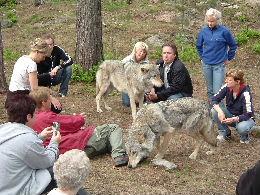
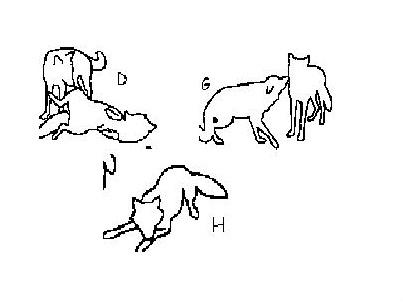
Introduction to behavioural study
It is practically common knowledge that wolves are a social living animal, although this is by choice and not out of necessity. It is more beneficiary for the wolves to live in packs, this enables them to bring down prey much larger than the wolves themselves, but as opportunistic feeders the wolf would survive on its own if needed, feeding on smaller prey, fish, carrion and garbage in urban areas. What makes it possible for the animals to live in packs are their ability to adapt and establish strong bonds with other individuals in a positive manner, assemble into a system of dominant and subordinates, and also use their elaborate communication skills. Between individuals the communication is done mainly by 3 different stimuli. There is the olfactory stimuli, scent marks, and auditory stimuli, growls, whines and howls, and lastly there are visual stimuli, using body language, facial expressions, tail movement and ear positions. Many visual signals are unnoticeable to us humans, but then there are some behavioural patterns which are more easily detected. These are taught and perfected when the wolves are pups, and the most common ones are active submission, similar to a pup begging for food; passive submission, similar to a adult inducing urination/ defecation in a pup; and play invite (see fig).
The different behavioural patterns and all signals of submission and dominance enforce, strengthens and maintain the hierarchy and relations in a pack. It ensures that no real aggressions take place between pack members and within the pack. They are also a way to ensure that aggressive behaviours are kept at a low frequency. By pack members directing their aggressive tendencies towards the omega, something known as energy displacement, aggressive confrontations with other pack mates lessen. Ultimately this then leads to the pack being more harmonious.
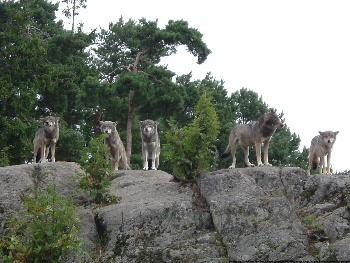
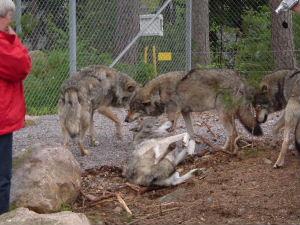
Method, result & discussion
As mentioned earlier, I investigated if hands-on meetings between humans and wolves had any effect on the social behaviours of a captive group at Kolmården Zoo, Sweden. The focal group consisted of an all male group of five individuals (see pic), born in 2000, that had been hand reared from the age of 2-3 days to 6 weeks. At the age of 12 months they began their career as ambassadors at Kolmården Zoo.
The behavioural study was made by recording 30 hours and 45 minutes in total with a surveillance camera during October to December 2004. The recording were made both during times when humans were present in the enclosure (hands-on meetings), and not. For the behaviours then counted from the recordings, see the partial ethogram.
What I found was that there were no difference between behaviours when humans were present or not. In general there was an increase in social behaviours, like submission from a distance or dominance attacks, during hands-on meetings and an increase of inactivity behaviours, like sit and lie, under periods when no human were present. The only statistically differences in behaviours with humans present or not, were found for Tromb and Korax. Other than that the results show that Zeke, the omega, did engage the most in the packs social interactions (30%), followed by Isor, 3rd in rank, at 23%, who engaged the most in dominance behaviours and attacks. A possible reason for this may be that Isor either has the highest motivation to move up in the hierarchy or his status is the most uncertain. The result also show that the group tend to spend most of their time resting (70%), which is consistent with conclusions from a different study.
It is obvious that humans being inside the enclosure with the wolves are a stimuli for submissive and dominance behaviours, just like feeding or selection of resting place is, but if this is a good or bad thing one can not know without further studies.
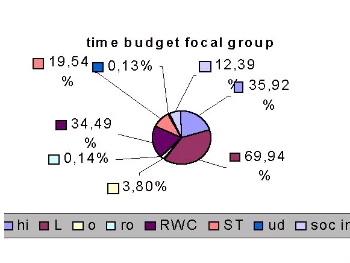
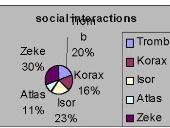
Responsible for this page:
Director of undergraduate studies Biology
Last updated:
